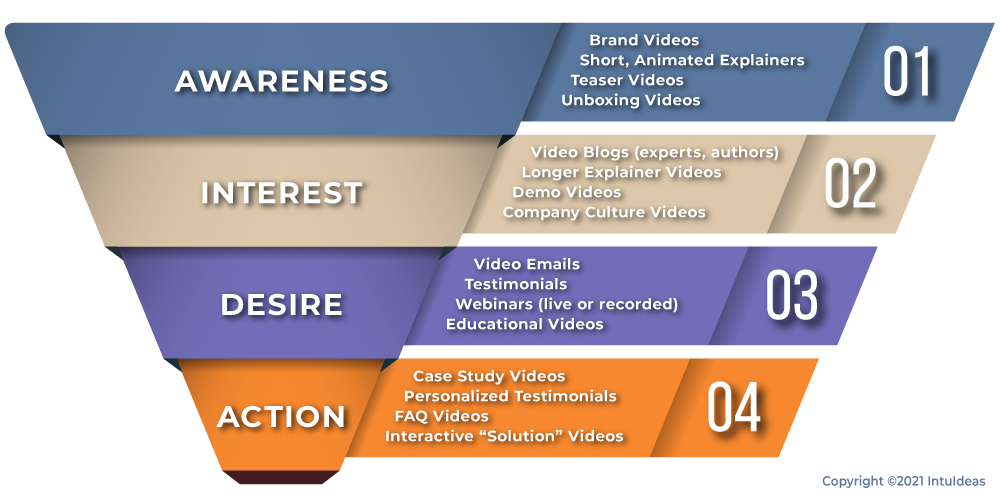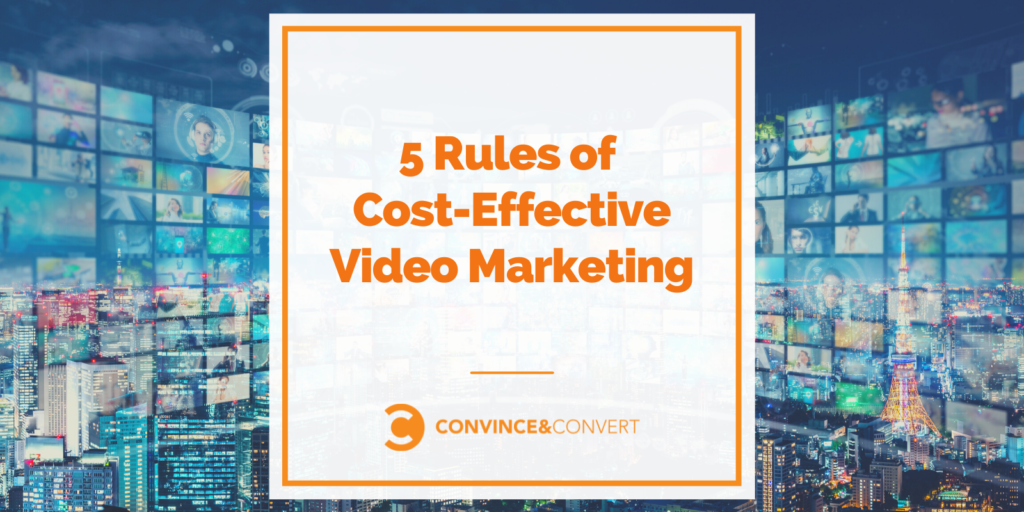By now, nearly everyone agrees that video is the premier medium for effective content marketing. You can find statistics galore back up that claim—including some jaw-dropping numbers from information hub 50Wheel. According to their report, ninety-one percent of marketers say that video provided ROI in 2020!
But just because you think video is great doesn’t automatically make it an effective part of your marketing mix. That takes work—and planning. So, here are some helpful guidelines, whether you’re just getting started or trying to pivot your inbound marketing or social media strategy.
Rule #1 – Video isn’t as expensive as you think it is.
If you’re a small business, a startup, or simply an author or an expert with ideas to share, you’ll experience extreme sticker shock when exploring video. The cost of traditional video production starts at around $1,000 per finished minute! There are good reasons for this, like the cost of a camera crew and studio space, but it’s still a huge deterrent.
The traditional video production model required plenty of travel time and some pretty expensive gear. Either a film crew went to your location, or the principals had to go to a recording studio. Both added significant costs. Fortunately, the smartphone changed all that. Cameras on mobile devices have improved exponentially—to the point where they are now a normal part of professional, feature film production. For marketing teams, this means the need for a big crew is no longer paramount. Everyone has a production-capable camera in their pocket.
It’s true that managing huge video files on smartphones is a pain, and that recording livestreams on Zoom is problematic over Wi-Fi. However, there are great solutions for remote capture—temporarily storing high-quality footage on devices before uploading it for editing. Some even allow a director to guide the sessions remotely and turn your smartphone or tablet into a teleprompter!
With remote capture, even when you add decent lights, microphones, lenses, and other basic gear, the basic video cost-per-finished-minute has dropped by about fifty percent! That means even small businesses and startups can realistically consider video as the primary medium of a sustained, integrated, inbound marketing strategy.
Rule #2 – DIY video isn’t as affordable (or effective) as you think it is.
After reading the above, some will conclude that, in order to “do video,” all they need is a decent phone or tablet, and some accessories. While the DIY approach is admirable, it has drawbacks.
First, there’s a steep learning curve and lot of other tasks competing for your time. Good video requires a story concept, a measurable objective, and the time and expertise to edit and publish each video to the appropriate channels. If you assign video to a member of your marketing team, be prepared to have them give up other tasks—or else hire more staff.
Second, there are just too many different kinds of video to do them all well. (See Rule #4.) Doing a simple vlog by yourself is pretty easy. Creating effective lead gen videos—not so much.
Finally, DIY is hard to sustain. Like all good inbound marketing, video has to be done over the long haul in order to be effective. That means adding fresh content—especially at the top and middle levels of the sales funnel.
Rule #3 – Always consider SEO, formatting, and platform selection.
The way we design and produce video has changed, but the rules for making videos visible to market-qualified prospects have not. Even if your video is engaging and compelling, merely posting it isn’t enough. Applying real-world SEO to video content means more than using keywords in the title and description.
Video also should not stand alone. The best results will happen when both video and written content are integrated with each other—and both coordinated with your overall SEO and marketing funnel strategy.
Even though the cost of video has dropped, it’s always a good idea to optimize it for multiple venues. That means planning ways to “recycle” existing content and knowing how to format it for different platforms and social media feeds.
Finally, there are so many video-friendly platforms to choose from that one must be careful not to get spread too thin. Pick a social media platform whose age and income demographics best fit your target market. Deliver video content as a regular part of an email drip campaign or e-newsletter. Above all, select a hosting environment that offers the best balance of search-friendliness and interactivity.
Rule #4 – Not all videos are the same!
There are lots of questions and arguments about how long a marketing video should be—given the attention spans of supposedly typical web users. These are not the right questions to ask. Of course, a video should always be engaging, and not just in the first few moments, but first it has to be the right kind of video. For example, a brand video used at the top of the funnel is totally different from an animated explainer, a recorded demo, or an interactive solution video.

In other words, there are many different types of video to consider, so marketers should always avoid the “one size fits all” generalization. Each type has different technical and design requirements and an optimal place in the sales funnel.
A successful marketing funnel has a simple requirement. Every piece of content should give qualified leads a legitimate reason and a means to explore further, commit to your solution, and continue towards a decision. Video is the ideal medium for accomplishing that, but only if produced and implemented to do so.
Rule #5 – Done right, video marketing has a substantial ROI.
Most marketing pros know the old quote, “Half the money I spend on advertising is wasted; the trouble is I don’t know which half.” Video marketing is not a guarantee or a panacea. However, if done correctly, video provides a clearer opportunity than most online media to realize a return on investment.
By definition, good video is engaging. It is cognitively easier to experience. The viewer can be immersed in the story without having to read and interpret words on a page. It also fulfills the basic requirement of all good marketing: “Show me; don’t tell me.” Above all, with the right amount of interactivity, video gives the user the power to choose, making their interaction with your brand direct, immediate, and consequential.
Anyone can add a “buy now” button or SEO keywords to a marketing video. But not everyone can use video to create a compelling story—one that solves a genuine need—guiding qualified buyers into a lasting relationship with your brand.
About the Author
John Parsons is an avid business and technology writer and the head of marketing for IntuIdeas, a Seattle-area content studio featuring video production, animation, interactive media, and writing services. John is a published author and the former Editorial Director for The Seybold Report.
The post 5 Rules of Cost-Effective Video Marketing appeared first on Content Marketing Consulting and Social Media Strategy.




